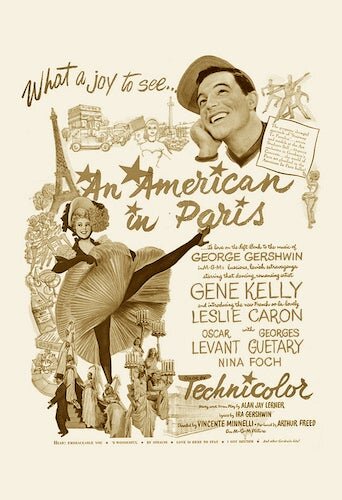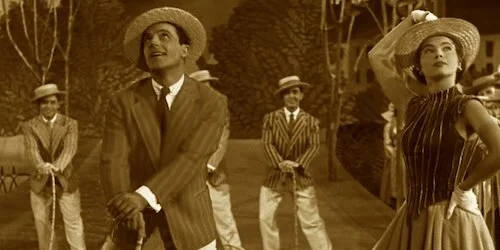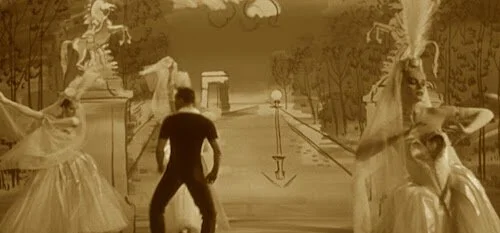An American in Paris
This review is a part of the Best Picture Project: a review of every single Academy Award winner for the Best Picture category. An American in Paris is the twenty fourth Best Picture winner at the 1951 Academy Awards.
Believe it or not, An American in Paris was only the second fully coloured Best Picture winner (after Gone with the Wind). It’s strange to think about, because the ‘50s would be the first batch of Best Picture winners to have more films in colour than in black and white. Eventually, a black and white winner would be a rarity. An American in Paris boasts its Technicolor capabilities as well, with some breathtaking visuals to accompany the Gershwin (George and Ira) compositions. That’s precisely why it won. As a story, it’s boilerplate material. As an experience, it’s a complete dream.
Perhaps as a very slight incentive, the lead character Jerry (Gene Kelly) is a World War II fighter wanting to settle down as an artist in Paris (Bingo. There’s your title). As he is soaking in his surroundings, his scenery becomes his art. We get the typical song-and-dance numbers, but you could never ever go wrong with Gene Kelly, whose moves are still astounding today (maybe even more so, considering the lack of musicals nowadays, and the expectations of them as well). Obviously, the narrative takes a backseat to these sequences, but you kind of expect that at some point with a Vincente Minnelli feature of this caliber.
Gerry and Lise, with the world merely serving as their backdrop.
So, An American in Paris is technically about three characters, but its title rightfully indicates that the entire story is strictly based around Jerry. Jerry has friends with him, also striving to find new life after the war. Jerry finds himself stuck in a love-triangle, as he falls for Lise (Leslie Caron): an art aficionado. Jerry vies for her attention, yada yada yada, they fall in love. Like a well executed waltz, the film becomes a back-and-forth of your usual relationship ebbs and flows. It’s fine for musicals to have love plots (most of them around this time did anyway), but An American in Paris kind of aims low with this element.
But, there is one reason why the film is an essential watch. It surpasses all of the mediocrity, and it turns the musical aspect into an absolute selling point. See, if you’re unfamiliar with Gene Kelly films, a common signature trait (in many musicals, but Kelly films seemed to do these very well) is the final number, done in a dream-like way. In Singin’ in the Rain, we have a pitch served in an imaginative musical form that goes on for about ten minutes or so. Here, we have what might be my favourite Kelly number ever. All of his artwork comes to life. Backdrops are sketches. Costumes are covered in slabs of painted colours. Jerry is living through his work, trying to make sense of the evening he just had (and what it all means for him). It is without question one of my favourite musical numbers of all time. It may have even been the moment that placed this film above classics like A Streetcar Named Desire or Quo Vadis with the Academy. It’s simply that good.
Jerry’s artwork coming to life in the final number is pure cinematic bliss.
Outside of that sequence, An American in Paris is fairly standard. There are better Gene Kelly flicks. There are better Vincente Minnelli flicks. There are better Leslie Caron flicks. I can safely say that this is a better film than the Minnelli-Caron reunion known as Gigi (we will get there very soon). Best Picture is a bit of a questionable honour in 2019, but don’t let that stop you from watching a good example of a standard ‘50s musical. It’s hardly an offensive watch, and it definitely has its strengths. Only because I brought it up earlier, it’s safe to say it’s no Singin’ in the Rain (but, then again, nothing is). It’s An American in Paris: a colourful, sugary time.
Andreas Babiolakis has a Masters degree in Film and Photography Preservation and Collections management from Ryerson University, as well as a Bachelors degree in Cinema Studies from York University. His favourite times of year are the Criterion Collection flash sales and the annual Toronto International Film Festival.






